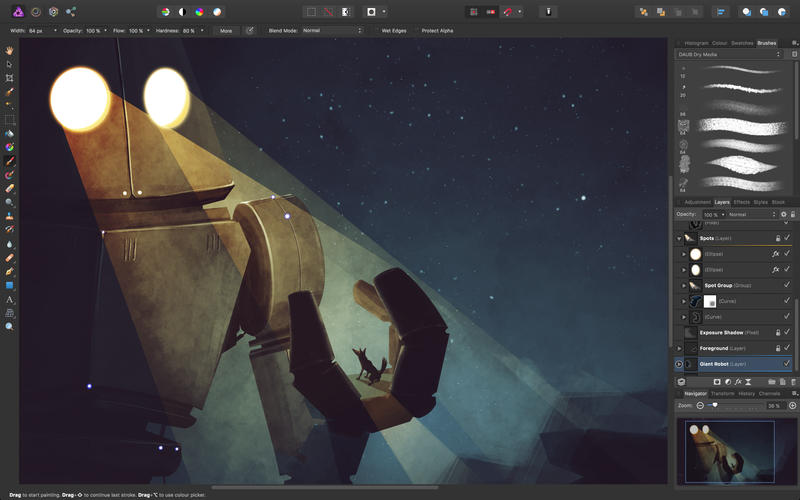

ON1, however, was a different tale, and as of this time I am unable to access this software at all in Affinity Photo. You can call them up from Affinity and utilise the ‘Brush’ tool to pass them back to Affinity just as you would in Photoshop. The Nik collection installed fine and was up and running immediately. Speaking of Nik and plugin support, I have two main workflow plugins: Nik and ON1.

However, with attention and time you can achieve comparable or better results than either of the those pieces of software.Īll images by Stephen Sheridan Affinity Photo for Windows: plugins It was a success although HDR work in Affinity Photo, in my opinion, is a longer process and gives a flatter result than either Photoshop or Google’s Nik collection. I’ve heard of this being done in Adobe Camera Raw, but I’ve never tried it myself. This led me to the conclusion that with a little selection work it is possible to selectively tone map certain regions of an image.Įffectively you are stacking three or five images then selecting a region which you can HDR merge and then blend that selection into your final image. Now at this point I found it quite interesting that instead of just merging to HDR you could ‘layer stack’ the images together without tone-mapping them. Needless to say, I was right at home and began by dropping in an HDR merge project. Its interface does resemble Photoshop in a quite remarkable way, but then so did Serif’s legacy software, Photoplus. Installation of Affinity Photo for Windows was fast and seamless, and I was up and running within about 10 minutes. My machine is a desktop PC with 16GB of RAM and runs Windows 10.
#Affinity photo trial trial#
This will be a first impression review, as I installed the trial version of Affinity Photo for Windows on Friday of last week and have only had the chance to use it for a brief time. Firstly I am not affiliated nor have any connection to Serif but I am a long time user of their software.


 0 kommentar(er)
0 kommentar(er)
